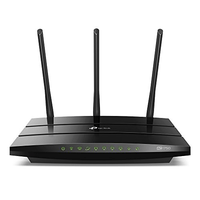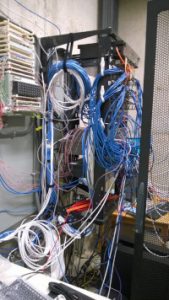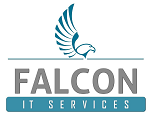When meeting potential new clients, one of the complaints I often hear is that their computer network is slow or unreliable. The year is 2021… this means that your computer network should be 99.9999% reliable.
Modern network equipment, cabling and Internet access is a mature segment of information technology. When using properly configured, business-grade equipment, your network should be up and running pretty much all the time. With that said, let’s look at the most common issues that contribute to poor network health.
Low-Cost, Low-Grade PC’s and Network Equipment
My rule of thumb is that any computing device that you can purchase at your local office supply store or electronics retailer is not going to cut it in a business environment. Those devices are meant to work in a home or SOHO (small/home office) environment. Whether it’s a printer, PC, router or switch, you should purchase business-grade equipment for your business. The bit of money you spend up front will be saved 10 times over when you factor in headaches, service calls and downtime.
Here are some clues that you may be using non-business grade equipment:
- Your devices freeze and have to be power cycled periodically.
- PC’s are slow despite having high spec CPU and memory.
- Printers jam, last only 1-2 years or the toner runs out quickly.
- What you bought is pretty, shiny and futuristic looking.

If your business network firewall/router looks like this, you have a problem.
Let’s look at 2 computers models from Dell: First is a Vostro (consumer grade) and next is an Optiplex (business grade). Dell divides their products (like many manufacturers) between business and consumer. With identical CPU, memory and disk capacity, the Optiplex costs considerably more. Is is because Dell thinks that business buyers are naive and are willing to pay more? Of course not, on the contrary! Business PC’s are usually procured by professional IT buyers who know exactly what to look for. They want PC’s that are easy to fix, have high quality components, don’t come pre-installed with bloatware and are not going to bog down when their utilization increases.
Poor Quality Structured Cabling
When running cables, make sure that you hire a cabling contractor that is licensed and certified. Poor cabling leads to intermittent failures, packet loss and a plethora of minute, intermittent problems that are difficult to diagnose and fix.
Professional, licensed structured cabling contractors do the job right or they risk losing their license. They will not run network cables along metal trusses, electrical conduits or water pipes. They use shielded cabling near machinery or in areas with high electrical interference. Non-licensed cabling technicians oftentimes do whatever is easiest, regardless of the long term effects.

If your cabling looks like this, you are bound to have network problems.
Low Cost Copper Based Internet Access and Shared Networks
One of the biggest productivity losses these days is the loss of Internet access. We rely heavily on the Internet and most companies cannot work when the Internet is down. Carriers often have tiered levels of quality and reliability based on price. Obviously, the lower the cost, the lower the quality.
Fiber Vs. Copper
Fiber Internet access has a higher cost but is the preferred media for speed and reliability. The cables and connectors have no metal parts and thus are not affected by electromagnetic interference or corrosion.
Copper lines (cable, DSL) are less costly and also less reliable. Copper is affected by electrical storms and rain, both of which affect the quality and reliability of the speed and stability. Moisture in the connectors and bubbling or twists in the cable can cause intermittent connections and packet loss.
Dedicated Vs. Shared Access
Carriers sell low cost shared Internet as well as more costly dedicated Internet. In shared networks, speed is guaranteed to a local NID or switch where many other connections terminate. As the service provider adds more customers to the area, the Internet speed slows down. If you notice slower speeds during specific peak times, you are likely on a share Internet connection. With dedicated access, the Internet speed is steady and predictable.
Ineffective Uninterruptible Power Supplies (UPS)
Surges, power spikes, brown-outs and black-outs are one of the biggest threats to network reliability here in South Florida. Nearby lightning strikes affect improperly run Ethernet cables (cable runs alongside metal trusses and plumbing) as well as unprotected devices. One of the biggest problems I often find is that businesses purchase the wrong type of power protection products. There are two common types of uninterruptible power supplies (battery backups or UPS):
Standby UPS – Does not have a voltage regulator, will not adequately protect your sensitive electronic equipment.
Line Interactive AVR UPS – Does have a voltage regulator to protect sensitive electronic equipment.
Standby UPS products are simple ‘battery back-ups’ that do not have proper voltage regulation capability. So how can the box state that they protect against surges? Because they have 15 amp circuit breaker which are ineffective against over-voltages that damage computing devices. Voltage regulation and surge protection are two different things! Only a line-interactive UPS with AVR (automatic voltage regulator) will adequately protect sensitive electronic devices by regulating over-voltages as well as under-voltages.
Many people don’t realize it but you can purchase a line interactive UPS with AVR for about the same price as a standby UPS or for just a little bit more. Use a line interactive UPS with AVR and you will see a big increases in network reliability and a decrease in equipment failure. American Power Smart UPS and Cyberpower AVR series are line-interactive UPS’s that have automatic voltage regulation. Always use a UPS that has AVR!
For more information about the difference between a standby and line interactive UPS’, look at the 10:00 minute mark in this video.
Hourly Vs. Managed Services
If you utilize hourly, pay-as-you-go IT service (as many small businesses do), there is little incentive for the service provider to fix problems for good. Hourly IT providers are often looked at with a suspicious eye if they spend too much time trying to find root causes of problems. There is no incentive for an hourly service provider to spend several billable hours finding the root cause of an issue rather than just restarting a device, service or a server to quickly fix the problem.
Flat-rate managed IT service providers on the other hand, have an incentive to fix problems for good. Recurring issues add to the operating cost of the managed service provider in service calls and on-site visits which are not billable. Flat rate IT is a win-win for both the service provider and the client.
Improper Configuration
Aside from using good quality equipment, it’s important to use professional design and installation. Improperly configured networks still work, however they present risks. Make sure to hire a professional and knowledgeable IT manager to ensure that your equipment is properly configured. Good IT managers should keep detailed network diagrams and change logs. If your IT does not, it’s likely that problems such as IP address conflicts, orphaned user accounts and other loose ends will create security and reliability issues in your network.
